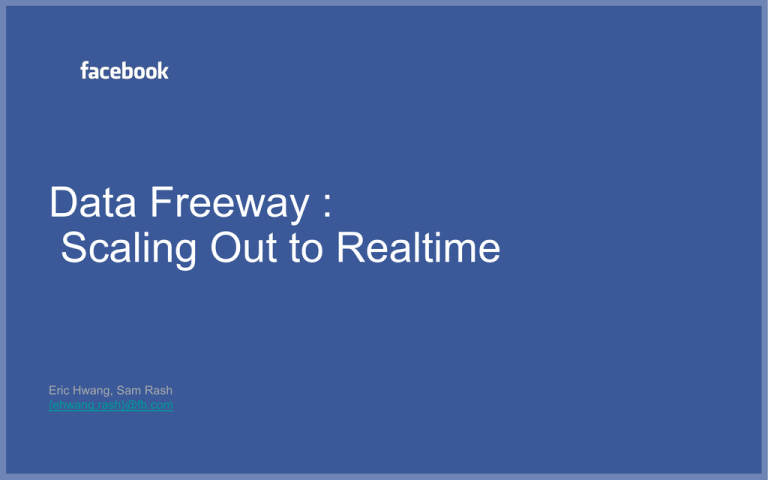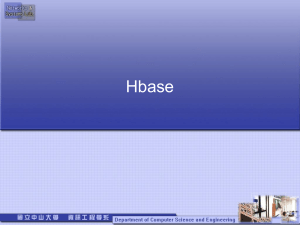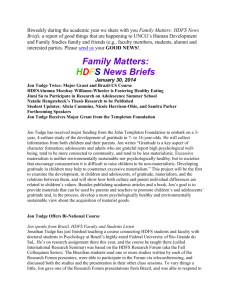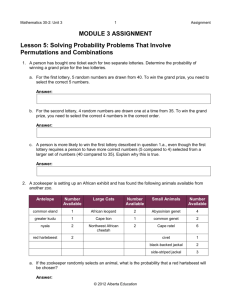Facebook - Data Freeway - Open Cloud Engine WIKI
advertisement

Data Freeway :
Scaling Out to Realtime
Eric Hwang, Sam Rash
{ehwang,rash}@fb.com
Agenda
»
»
»
»
Data at Facebook
Data Freeway System Overview
Realtime Requirements
Realtime Components
›
›
›
›
›
Calligraphus/Scribe
HDFS use case and modifications
Calligraphus: a Zookeeper use case
ptail
Puma
» Future Work
Big Data, Big Applications / Data at Facebook
» Lots of data
›
›
›
›
more than 500 million active users
50 million users update their statuses at least once each day
More than 1 billion photos uploaded each month
More than 1 billion pieces of content (web links, news stories, blog posts,
notes, photos, etc.) shared each week
› Data rate: over 7 GB / second
» Numerous products can leverage the data
›
›
›
›
Revenue related: Ads Targeting
Product/User Growth related: AYML, PYMK, etc
Engineering/Operation related: Automatic Debugging
Puma: streaming queries
Data Freeway System Diagram
Realtime Requirements
› Scalability: 10-15 GBytes/second
› Reliability: No single point of failure
› Data loss SLA: 0.01%
• loss due to hardware: means at most 1 out of 10,000 machines can lose data
› Delay of less than 10 sec for 99% of data
• Typically we see 2s
› Easy to use: as simple as ‘tail –f /var/log/my-log-file’
Scribe
• Scalable distributed logging framework
• Very easy to use:
• scribe_log(string category, string message)
• Mechanics:
•
•
•
•
Runs on every machine at Facebook
Built on top of Thrift
Collect the log data into a bunch of destinations
Buffer data on local disk if network is down
• History:
• 2007: Started at Facebook
• 2008 Oct: Open-sourced
Calligraphus
» What
› Scribe-compatible server written in Java
› emphasis on modular, testable code-base, and performance
» Why?
› extract simpler design from existing Scribe architecture
› cleaner integration with Hadoop ecosystem
• HDFS, Zookeeper, HBase, Hive
» History
› In production since November 2010
› Zookeeper integration since March 2011
HDFS : a different use case
» message hub
› add concurrent reader support and sync
› writers + concurrent readers a form of pub/sub model
HDFS : add Sync
» Sync
› implement in 0.20 (HDFS-200)
• partial chunks are flushed
• blocks are persisted
› provides durability
› lowers write-to-read latency
HDFS : Concurrent Reads Overview
» Without changes, stock
Hadoop 0.20 does not allow
access to the block being
written
» Need to read the block being
written for realtime apps in
order to achieve < 10s latency
HDFS : Concurrent Reads Implementation
1. DFSClient asks Namenode
for blocks and locations
2. DFSClient asks Datanode
for length of block being
written
3. opens last block
HDFS : Checksum Problem
» Issue: data and checksum updates are not atomic for last chunk
» 0.20-append fix:
› detect when data is out of sync with checksum using a visible length
› recompute checksum on the fly
» 0.22 fix
› last chunk data and checksum kept in memory for reads
Calligraphus: Log Writer
Scribe categories
Calligraphus
Servers
Server
Category 1
Category 2
Server
Category 3
Server
How to persist to HDFS?
HDFS
Calligraphus (Simple)
Calligraphus
Servers
Scribe categories
HDFS
Server
Category 1
Server
Category 2
Category 3
Server
Number of
categories
x
Number of
servers
=
Total number of
directories
Calligraphus (Stream Consolidation)
Scribe categories
Calligraphus
Servers
Router
Writer
Router
Writer
Router
Writer
HDFS
Category 1
Category 2
Category 3
ZooKeeper
Number of
categories
=
Total number of
directories
ZooKeeper: Distributed Map
» Design
› ZooKeeper paths as tasks (e.g. /root/<category>/<bucket>)
› Cannonical ZooKeeper leader elections under each bucket for bucket
ownership
› Independent load management – leaders can release tasks
› Reader-side caches
› Frequent sync with policy db
Root
A
1
2
3
B
4
5
1
2
3
C
4
5
1
2
3
D
4
5
1
2
3
4
5
ZooKeeper: Distributed Map
» Real-time Properties
›
›
›
›
›
Highly available
No centralized control
Fast mapping lookups
Quick failover for writer failures
Adapts to new categories and changing throughput
Distributed Map: Performance Summary
» Bootstrap (~3000 categories)
› Full election participation in 30 seconds
› Identify all election winners in 5-10 seconds
› Stable mapping converges in about three minutes
» Election or failure response usually <1 second
› Worst case bounded in tens of seconds
Canonical Realtime Application
» Examples
› Realtime search indexing
› Site integrity: spam detection
› Streaming metrics
Parallel Tailer
• Why?
• Access data in 10 seconds or less
• Data stream interface
• Command-line tool to tail the log
• Easy to use: ptail -f cat1
• Support checkpoint: ptail -cp XXX cat1
Canonical Realtime ptail Application
Puma Overview
» realtime analytics platform
» metrics
› count, sum, unique count, average, percentile
» uses ptail checkpointing for accurate calculations in the case of failure
» Puma nodes are sharded by keys in the input stream
» HBase for persistence
Puma Write Path
Puma Read Path
Summary - Data Freeway
» Highlights:
› Scalable: 4G-5G Bytes/Second
› Reliable: No single-point of failure; < 0.01% data loss with hardware
failures
› Realtime: delay < 10 sec (typically 2s)
» Open-Source
› Scribe, HDFS
› Calligraphus/Continuous Copier/Loader/ptail (pending)
» Applications
› Realtime Analytics
› Search/Feed
› Spam Detection/Ads Click Prediction (in the future)
Future Work
» Puma
› Enhance functionality: add application-level transactions on Hbase
› Streaming SQL interface
» Seekable Compression format
› for large categories, the files are 400-500 MB
› need an efficient way to get to the end of the stream
› Simple Seekable Format
• container with compressed/uncompressed stream offsets
• contains data segments which are independent virtual files
Fin
» Questions?







